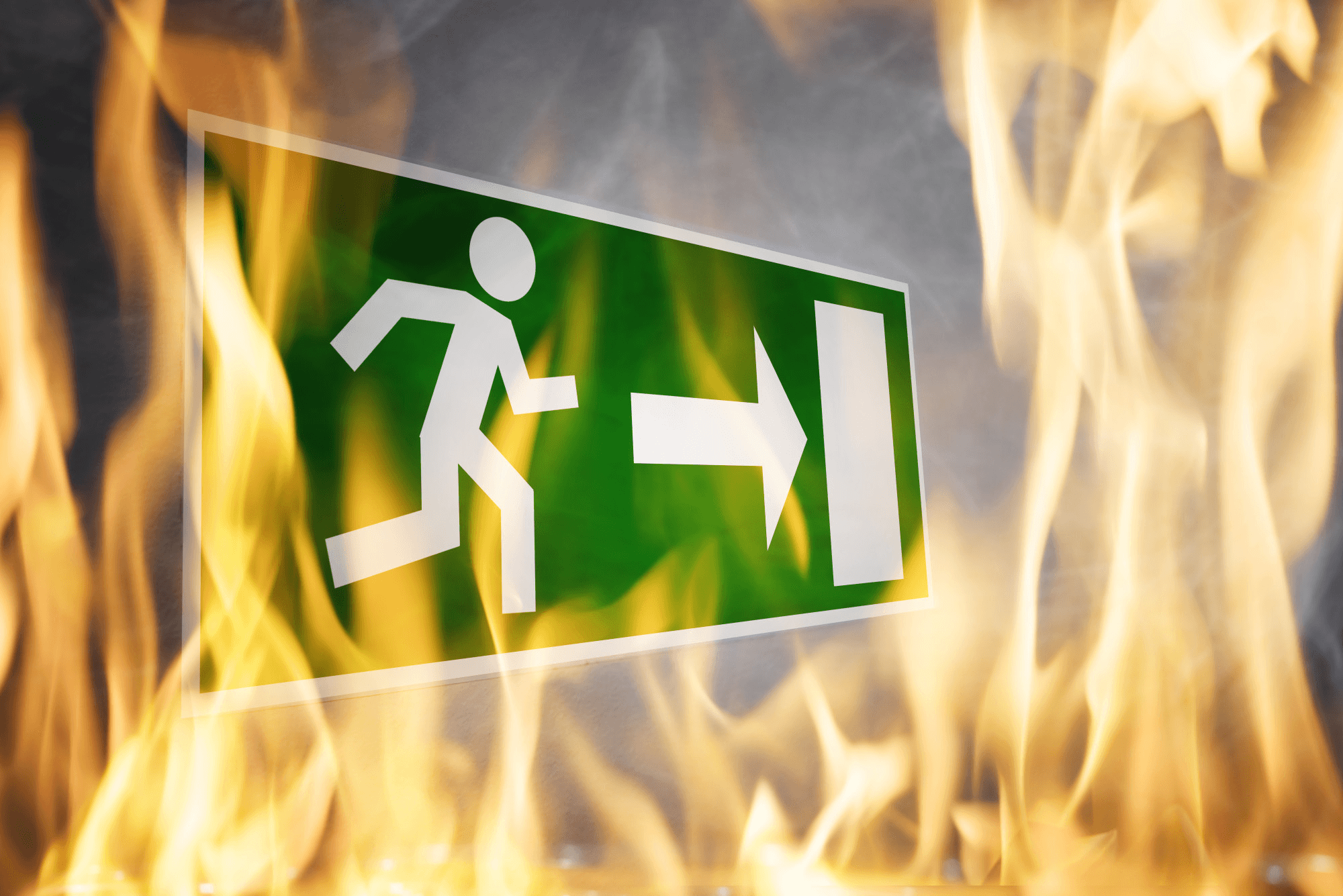In 2020, there were 153,314 fire incidents in the United Kingdom. Although this is a 6% decrease compared to the year before, the risk of fire is always there.
Every fire won’t be prevented, but training can drastically decrease the likelihood of one occurring. Not only that, but fire safety training in the workplace can save employee lives if one ignites.
Not sold on the importance of fire safety training at your place of business? Read on to learn why it is so important.
What Is Fire Safety Training?
To understand the importance of fire safety training, you’ll need to know the true meaning of it.
When a fire happens in the workplace, the main priority is to get everyone out of the building efficiently and carefully. In general, the sound of a fire alarm causes a lot of anxiety and leads many to forget how to act reasonably.
Any emergency is stressful and needs to be responded to immediately, especially a fire. Although regular training might not keep everyone calm during an actual fire, it can better prepare people to deal with it.
If a fire were to ever occur, office fire safety training can arm your employees with the knowledge they need. This will allow everyone the best chance to evacuate the building methodically and safely.
Why Offer Business Fire Safety Training?
Not only is fire safety training for employees required by law, but it can also help save the lives of your entire workforce. In these courses, your employees will learn how to stop potential fires from occurring in the first place.
If a fire were to happen, your employees will have more confidence in successfully evacuating after undergoing training.
What Fire Safety Training Should Office Managers Provide?
As an office manager, you can provide online fire safety training or physical safety training at the office.
Each organization should provide training depending on the employees they have. However, all employees need to learn the rules in five key categories.
1. Rules, Regulations, and Prevention
In this area of training, your staff should learn the following:
- Basic fire awareness and prevention
- Good housekeeping
- Risk awareness
- Smoking policy
- Emergency plan
- Good housekeeping is not defined only as cleanliness. It includes keeping areas of the workplace organized and maintained.
The general rules for good housekeeping is a basic part of fire prevention. For example, you and your employees need to pay attention to details like storage facilities, aisle marking, and the layout of the entire workplace.
To ensure that housekeeping is effective, this needs to be an ongoing process for your company. Don’t forget that upholding proper maintenance is a major piece of good housekeeping.
Figure out which exits are best suited for employees during the event of a fire and list them in your emergency plan. If you don’t already have an emergency plan in place, now is the time to create one. Here’s how:
2. Creating a Fire Evacuation Plan
To establish a fire evacuation plan, you need to identify hazards. This is something you and your employees will learn to do during the first phase of fire safety training.
Most potential fire hazards come in the form of space heaters, cooking areas, cables, and any heating source. Business management should implement strict rules like no smoking and not allowing potentially dangerous electronics.
Other common fire hazards in the workplace include the following:
- Dust
- Combustible materials
- Flammable liquids
- Electrical outlets
- Computers and servers
Next, you’ll need to assign specific fire safety rules to key employees such as those who enforce regulations and conduct fire safety inspections. You’ll also need someone to take an accurate count for evacuated employees.
Don’t forget to include communication in your plan. You’ll need to detail how you and your employees will communicate when there is a fire.
Contact information should be easily accessible so that an employee can take it on their way out of the building. This step is especially important to include if you work in a large workspace.
Finalize the fire evacuation plan by detailing exactly how it should play out. Share this information with each employee and practice it regularly. Practising an evacuation plan when there is no fire is never a bad use of time.
3. How to React to a Fire
This section of fire safety training involves knowing exactly what to do if a fire were to occur in the workplace.
Your emergency plan should correlate with what employees learn in this area. For instance, employees should learn of any exits that are not regularly used along with every escape route and refuge in the building.
If your employee were to discover the fire, they need to know how to raise the alarm. You’ll need to show your employees the location of the alarm indicator panel.
Employees who hear the fire alarm are not always the ones who call a fire and rescue service. In fact, you should have a designated person who calls these services when a fire occurs.
The key to fire safety is getting everyone out of the building as quickly as possible. Sometimes calling fire services to save the building will have to wait until everyone has made it safely outside.
A workplace that includes vulnerable people or those with disabilities have to have special provisions. If someone cannot quickly get out of the building on their own, they will need assigned assistance.
The evacuation procedures should include clients and members of the public who might be in or around the building when a fire starts. Employees should reassure them and guide them to the drawn-out exits.
4. Good Practice and Equipment
Every employee should know where the fire equipment is stored and how to use it. Fire extinguishers and fire blanket use can be discussed during this area of the training.
If you work in a larger building, it might be more beneficial to train specific people on how to use the fire equipment. However, every employee should at least know where the equipment is.
Fire safety in the UK includes the use of fire doors. This equipment can prevent fire and smoke from spreading from room to room. Once a room gets cleared, someone should close these doors when they hear the fire alarm sound.
A business that uses machinery will need to have a process for shutting down non-essential equipment. This includes isolating all power supplies.
5. Fire Alarms
The last area covered in fire safety training is fire alarms. It is not the average employee’s job to maintain the health of a fire alarm. Yet, if they notice a fire alarm losing battery life or something similar, they should tell management ASAP.
In this category, employees will also learn how to report false alarms and near misses. These are all things that management should know how to complete by heart through fire investigation training.
How Often Should Management Complete Fire Safety Training?
Fire safety training is not a one and done thing. To remain fresh on the procedures, it is essential to complete this training every so often.
As a general rule of thumb, any new employee should learn about fire safety in their induction training. After that, fire safety training should come in the form of a refresher at least once a year.
However, training should happen more frequently if any of the following are true for your place of business:
- There is a high staff turnover
- There is a high risk of fire
- Your employees are responsible for the safety of others (vulnerable patients, residents, hotel guests, etc.)
In addition to these factors based on your workplace, certain staff members should receive more regular training such as:
- Department heads
- Fire marshals or wardens
- Firefighting teams in large workplaces
- Floor supervisors
- Central control room staff
- Security staff
- Night security patrols
- Stewards
- Kitchen staff
- Engineering and maintenance staff
- Receptionists
These are team members who will have particular responsibilities when it comes to fire safety. For this reason and more, they should have a refresher course more than once a year.
Is Your Place of Business Overdue for Fire Safety Training?
If you haven’t completed fire safety training in over a year, or worse, not at all, you are overdue for courses. Not only is it against the law to omit fire training from your business, but it is also unsafe for anyone in the building.
With busy schedules, it might be hard to find the time for training without the help of an outside source. Luckily, companies like UK Fire Group exist for that reason.
If you need to up your fire safety training for the good of your employees and your business, we can help. Contact us today to learn about our many courses and how each of them can benefit your company.





0 Comments